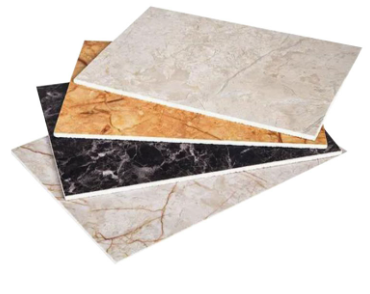In any building, be it a cozy home, a bustling office, or a crowded public space, fire safety is of utmost importance. When it comes to choosing wall panel materials, one common question is: Are PVC wall panels fire resistant?
The Basics of PVC
PVC, or polyvinyl chloride, is a widely used thermoplastic polymer in the construction industry. It is composed of carbon, hydrogen, and chlorine atoms. PVC wall panels are popular due to their versatility, affordability, and low maintenance requirements. They come in various colors, patterns, and textures, making them suitable for different interior design styles.
Fire Resistance of PVC Wall Panels
Inherent Fire - Retardant Properties
PVC has some inherent fire - retardant characteristics. Chlorine, a major component of PVC, plays a crucial role in its fire - resistance. When exposed to heat or flames, PVC begins to decompose. During this decomposition, it releases hydrogen chloride gas. This gas is non - combustible and can dilute the oxygen in the air around the fire, which helps to slow down the combustion process. In addition, the decomposition of PVC forms a char layer on the surface of the panel. This char layer acts as a barrier, insulating the underlying material from the heat of the fire and further impeding the spread of flames.
Flame Spread Index
To measure the fire - resistance of building materials, a flame spread index (FSI) is used. PVC wall panels generally have a relatively low flame spread index. Many high - quality PVC wall panels can achieve a Class A fire rating. In the United States, for example, a Class A rating means that the material has a flame spread index of 25 or less. This indicates that the panel will not contribute significantly to the spread of fire in a building. For instance, in a multi - story apartment building, if the walls are clad with Class A - rated PVC wall panels, a fire in one unit is less likely to quickly spread to adjacent units through the walls.
Smoke Development
Another important aspect in fire safety is smoke development. When a material burns, the amount and toxicity of the smoke it produces can be as dangerous as the flames themselves. PVC wall panels, when tested, typically have a smoke developed index (SDI) within an acceptable range. For Class A - rated PVC panels, the SDI is often up to 450. This means that while they do produce some smoke when burning, it is within the limits considered safe for building materials, giving occupants more time to evacuate in case of a fire.
Limitations and Considerations
However, it's important to note that the fire - resistance of PVC wall panels can be affected by several factors. The thickness of the panel matters; thicker panels may offer better fire - resistance compared to thinner ones. Also, the presence of other materials in the wall assembly can impact the overall fire - performance. For example, if PVC wall panels are installed over a highly combustible substrate, the fire - resistance of the entire system may be compromised. In some cases, where strict fire - rated wall assemblies are required by building codes, PVC wall panels alone may not meet the criteria. Instead, they need to be installed over an approved fire - rated wall or ceiling assembly, such as a 5/8 - inch type X gypsum board.
Conclusion
Overall, PVC wall panels do possess significant fire - resistant properties. Their ability to resist flames, slow down fire spread, and limit smoke development makes them a viable option for many applications where fire safety is a concern. If you're looking for high - quality, fire-resistant PVC wall panels, consider the offerings from Chongqing Huigong. Our PVC wall panels not only meet high fire - safety standards but also come with excellent durability and aesthetic appeal, making them a great choice for your next project.

